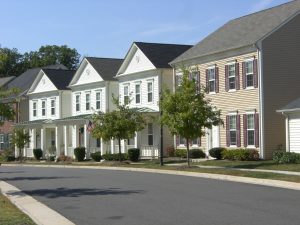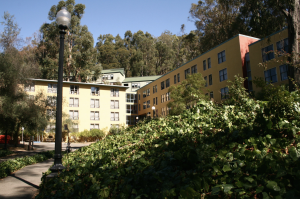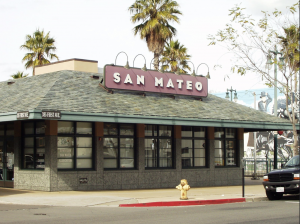By: Karina Sun
T
The imposition of rent ceilings on units that are in high demand often disincentivizes landlords from maintaining and upkeeping the facilities — this is a widely understood, textbook truth. The city of Berkeley is no exception, and as a city of 122,324 residents confined to just 10.47 square miles of land, the demand for housing of any kind is understandably high [1]. As a result, the Berkeley Rent Stabilization Board has established base rent ceilings as a traditional way of keeping rent prices from going through the roof [2].
While workable in theory, this does not change the fact that there is still a greater demand than supply of housing units in Berkeley and the wider Bay Area [3]. This gap in what could be earned and what is being earned on the landlords’ side discourages landlords from unit upkeep, even with basic necessities. This problem makes itself known very apparently in the state of the buildings, but landlords are slow to take action. This is the most basic issue of habitability within the city of Berkeley.
However, the general issue of facility upkeep is exacerbated in Berkeley by two key characteristics. Firstly, as a city composed 35 percent of university students, there is a high turnover rate of tenants in particular units [4]. This contributes to the problem by removing an aspect of consistency and, thus, accountability. When the burden of inspecting and reporting falls on the tenants, yet the tenants never stay more than a few years at most, it is easy for issues to go unresolved and for units to sink below satisfactory habitability. Secondly, the housing market in Berkeley is dominated by a handful of leasing corporations. Coupled with the high turnover rate of student tenants, this greatly impedes accountability.
Currently, the main accountability mechanism in the city of Berkeley is that tenants can request for a housing code inspection to be conducted by the city [5]. Apart from this, owners are required to provide certification that the housing meets safety standards every year by July 1 as per the Rental Safety Program [6]. Though good in theory, the problem is that the burden once again falls on the tenant, both in reporting and being informed of safety codes.
The problem here is multi-dimensional but undeniable in scope. The existence of a city-wide base rent ceiling, though necessary, can prove to be dangerous. One drastic example is the state of many Berkeley residential buildings in relation to earthquake safety regulations. It was not until 2016 when the city of Berkeley started the Soft Story Program that more than 200 building owners within the city were forced to begin the retrofitting process [7]. This demonstrates the unwillingness of building owners to undertake improvements on their own accord and the need for stronger accountability mechanisms.
Addressing the Problem
If this problem is allowed to continue with only the current accountability mechanisms in place, no substantive progress is likely to occur. Because the problem is multi-faceted, various measures can be utilized to target each aspect, but all such options must be considered in relation to the following criteria. The solution must be politically feasible, acknowledging the liberal tradition and history of Berkeley. It must be operationally feasible and accessible, accounting for the issues seen with tenants’ burden and ensuring follow-through. Lastly, the solution must be sustainable, addressing the turnover rate for Berkeley residents more broadly.
One possibility is to raise the rent ceiling with the hope of incentivizing landowners to improve their facilities as driven by competition in the market. This would satisfy the criteria of being operationally feasible; however, this is politically unlikely and would lead to a whole new slew of difficulties surrounding the issue of affordable housing; thus, also knocking down the sustainability criterion.
Another possible solution could be implementing an accountability program with the city. Similar to the Soft Story Program, the program would focus specifically on older buildings, in the same manner that the Soft Story Program targeted buildings that were constructed prior to 1978 [8]. This would entail a full inspection of all such buildings prior to the start of the program and the construction of a rubric of specific baseline facility expectations as per community and other stakeholder input. While this would succeed in being operationally accessible by shifting responsibility to the Berkeley Rent Stabilization Board to report and would provide a sustainable option, it is also politically unlikely, as property owners are likely to resist and questions of funding for the project raised.
A third option would be to require submission of the annual certification of safety codes to the Berkeley Rent Stabilization Board, which can then follow up on whatever is lacking. Part of this adjusted program would be a random audit to ensure honesty. This solution is operationally feasible as on the property owner end it only requires a second submission, and this solution is sustainable as it functions adjacently to an existing requirement. Politically, it is also feasible in that large scale changes or actions are not required, and it would shift consistent responsibility off of the tenant and onto the property owner with the board as a mediator.
Recommendation & Conclusion
For the aforementioned reasons, I am recommending the third solution option– the submission of certification to the Berkeley Rent Stabilization Board as well as the existing tenant.
Though not always the most preeminent concern, habitability and regular maintenance repairs are an undeniable aspect of occupancy. While the City of Berkeley Rent Stabilization Board has measures in place that offer temporary solutions, they fall on the wayside when considering the special circumstances of Berkeley residents, especially students.
Presently, I am living in a building that is not yet retrofitted and has only recently received approval for a building permit to do so. In the interim, there are signs posted up everywhere that warn of the danger of living in the building. But earthquake safety is just one aspect of it. Though Berkeley is going through a housing crisis in terms of units available, an important dimension of this problem is the quality offered. Our ceiling leaks, doors do not always close, the walls are cracked and dilapidated, and there is mold buildup in the bathroom. All these conditions predated our occupancy, we came in, and the tenant prior to us stated that she was just used to it. On our end, we have not yet found the time to go through the process of reporting, partially because of the sheer number of problems we would need addressed. But our circumstances are par for the course in Berkeley — people are desperate for housing and unsure or fearful of raising these issues.
Endnotes:
- “U.S. Census Bureau QuickFacts: Berkeley City, California.” Census Bureau QuickFacts, 2018, www.census.gov/quickfacts/berkeleycitycalifornia.
- “Guide to Rent Control.” City of Berkeley, 2018, https://www.cityofberkeley.info/Rent_Stabilization_Board/Home/Guide_to_Rent_Control.aspx.
- Garfield, Leanna. “The San Francisco Bay Area’s housing crisis is so out of control.” Business Insider, 2018, https://www.businessinsider.com/san-francisco-affordable-housing-solutions-2018-6.
- “By the Numbers.” UC Berkeley, 2018, www.berkeley.edu/about/bythenumbers.
- “Rental Housing Safety Program.” City of Berkeley, 2018, https://www.cityofberkeley.info/housing/rhsp/.
- Ibid.
- “Soft Story Program.” City of Berkeley, 2018, https://www.cityofberkeley.info/softstory/.
- Ibid.








Be First to Comment